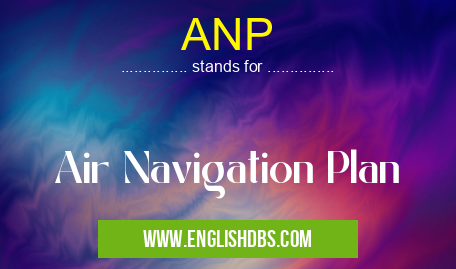What does ANP mean in UNCLASSIFIED
ANP stands for Air Navigation Plan. It refers to a comprehensive document outlining the aeronautical infrastructure, services, and procedures necessary to ensure the safe and efficient movement of air traffic within a specific region or country. ANPs are typically developed and maintained by aviation authorities or civil aviation organizations.

ANP meaning in Unclassified in Miscellaneous
ANP mostly used in an acronym Unclassified in Category Miscellaneous that means Air Navigation Plan
Shorthand: ANP,
Full Form: Air Navigation Plan
For more information of "Air Navigation Plan", see the section below.
Key Elements of an Air Navigation Plan
- Aeronautical Information: Details on airports, airspace, air traffic services, and navigation aids.
- Air Traffic Management Procedures: Protocols and regulations for managing and controlling air traffic flow.
- Communications, Navigation, and Surveillance (CNS): Describes the systems and technologies used for communication, navigation, and surveillance of aircraft.
- Meteorological Services: Outlines the provision of weather information and forecasting services.
- Search and Rescue (SAR): Defines the procedures and resources for search and rescue operations.
Benefits of an Air Navigation Plan
- Enhanced Safety: Enforces standardized procedures and facilitates coordination among different entities involved in air traffic management.
- Increased Efficiency: Optimizes airspace utilization, reduces delays, and improves overall traffic flow.
- Cost Reduction: Streamlines operations, reduces infrastructure duplication, and minimizes operating costs.
- Improved Environmental Sustainability: Promotes fuel-efficient flight paths and reduces emissions.
Essential Questions and Answers on Air Navigation Plan in "MISCELLANEOUS»UNFILED"
What is an Air Navigation Plan (ANP)?
An ANP is a comprehensive document that outlines the plans and procedures for the safe and efficient management of air traffic within a specific airspace. It provides guidance on airspace design, air traffic services, communications, navigation, surveillance, and other aspects of air navigation.
Who is responsible for developing and revising ANPs?
ANPs are typically developed and revised by aviation authorities, such as national air navigation service providers (ANSPs) or international organizations like the International Civil Aviation Organization (ICAO).
What are the key elements of an ANP?
Key elements of an ANP include:
- Airspace classification and design
- Air traffic management procedures
- Navigation and surveillance systems
- Communications infrastructure
- Meteorological information
- Search and rescue plans
How is an ANP used in air traffic management?
ANPs provide the foundation for the safe and efficient operation of air traffic by:
- Defining the rules and procedures for aircraft operations
- Coordinating airspace usage among different airspace users
- Facilitating communication and data exchange between pilots and air traffic controllers
- Ensuring the availability of accurate and timely navigation and surveillance information
How often are ANPs updated?
ANPs are typically updated regularly to reflect changes in airspace, air traffic patterns, and technological advancements. The frequency of updates can vary depending on the jurisdiction and the nature of the changes.
What is the importance of stakeholder involvement in ANP development?
Stakeholder involvement is crucial in ANP development to ensure that the plan addresses the needs and concerns of all affected parties, including airlines, airports, pilots, air navigation service providers, and other airspace users. It promotes transparency, collaboration, and the development of a consensus-based plan.
Final Words: Air Navigation Plans are essential tools for ensuring the safe, efficient, and sustainable movement of air traffic. They provide a framework for coordinating aviation activities, fostering collaboration among stakeholders, and meeting the evolving demands of the aviation industry. By adopting and adhering to ANPs, aviation authorities can enhance the safety, reliability, and environmental performance of their airspace systems.
ANP also stands for: |
|
| All stands for ANP |
